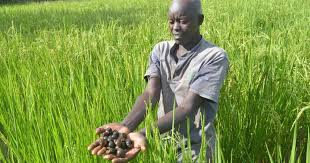

Following the successful fortification of edible oils, wheat flour and maize meal, the Ministry of Health intends to include rice in the initiative.
This action aims to increase the nutritional content of staple foods and fight malnutrition, guaranteeing that all Kenyans have access to better options.
The World Health Organisation defines fortification as the intentional addition of one or more micronutrients, like vitamins and minerals, to food to improve its nutritional value.
The initiative coincides with rising rice consumption, especially among the nation’s young people, according to Principal Secretary for Health and Professional Standards Mary Muthoni.
Kenya currently imports roughly 800,000 tonnes of rice per year to meet the country’s increasing demand, despite producing between 150,000 and 200,000 tonnes.
Muthoni spoke at an East and Southern African regional consultation on sustainable universal salt iodization and food fortification to prevent and control micronutrient deficiencies.
Kenya is at the forefront of food fortification, boosting the availability of vital micronutrients such as zinc, iron, vitamin A, and B vitamins.
“Despite our achievements, there are still challenges to ensuring the long-term viability of these programs. Continuous monitoring, consumer awareness, and addressing the costs of fortification pre-mixes are critical,” she added.
The meeting’s participants talked about a strategic roadmap for maintaining universal salt iodization and scaling up food fortification in 2025–2030.
Millers are currently required by the Food, Drugs and Chemical Substances Act of the Laws of Kenya CAP 254 to fortify edible oils, maize meal, and wheat flour.
The Kenya Bureau of Standards has drafted an East Africa Standard for rice fortification, which is awaiting regional adoption, and a policy brief on the topic was created last year.
The Food Fortification Initiative has chosen five essential foods for fortification in Africa, with wheat flour at the forefront, according to Ronald Afidra, Africa Network Coordinator.
“Wheat flour is fortified with vitamins and minerals, including iron, zinc, and vitamin A.
Rice is the most recent addition, reflecting rising consumption across the continent,” he said.
Afidra pointed out that although imported rice is consumed in many African nations, it urgently needs to be enriched.
“Most African countries consume rice, which is primarily imported from Asia (India, Bangladesh, or Vietnam).
“As rice consumption rises in African countries, there is a greater need to improve its nutritional value,” he explained.
“Collaboration between the private sector, government, and agencies is crucial to reduce micronutrient deficiencies in Eastern and Southern Africa, as there are data gaps regarding their impact.”
The demand for rice is rising not only in Kenya but also in Nigeria, India, Ethiopia and Bangladesh, according to Charles Opiyo of the Global Alliance for Improved Nutrition.
“Rice is a more resilient crop than maize, and fortification programmes can help combat food insecurity and hidden hunger,” he said.
Even though food security might seem adequate, Opiyo noted that fulfilling micronutrient needs is essential for both economic development and good health.
He said GAIN is working on advanced rice fortification projects in partnership with the Kenyan government and Jomo Kenyatta University of Agriculture and Technology.
“We are conducting a landscape analysis for rice in Kenya to understand production levels, import volumes, fortification potential, and consumer behaviour,” Opiyo said.
He called for a holistic approach to the fortification initiative.











